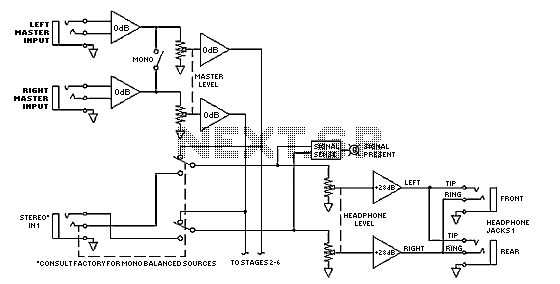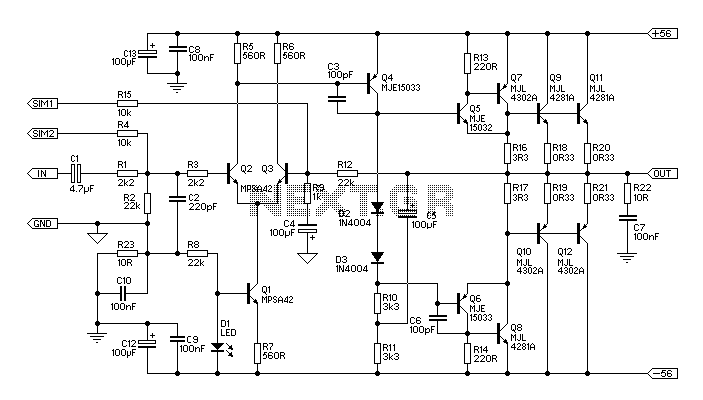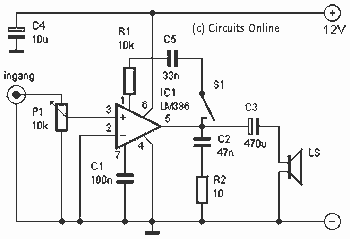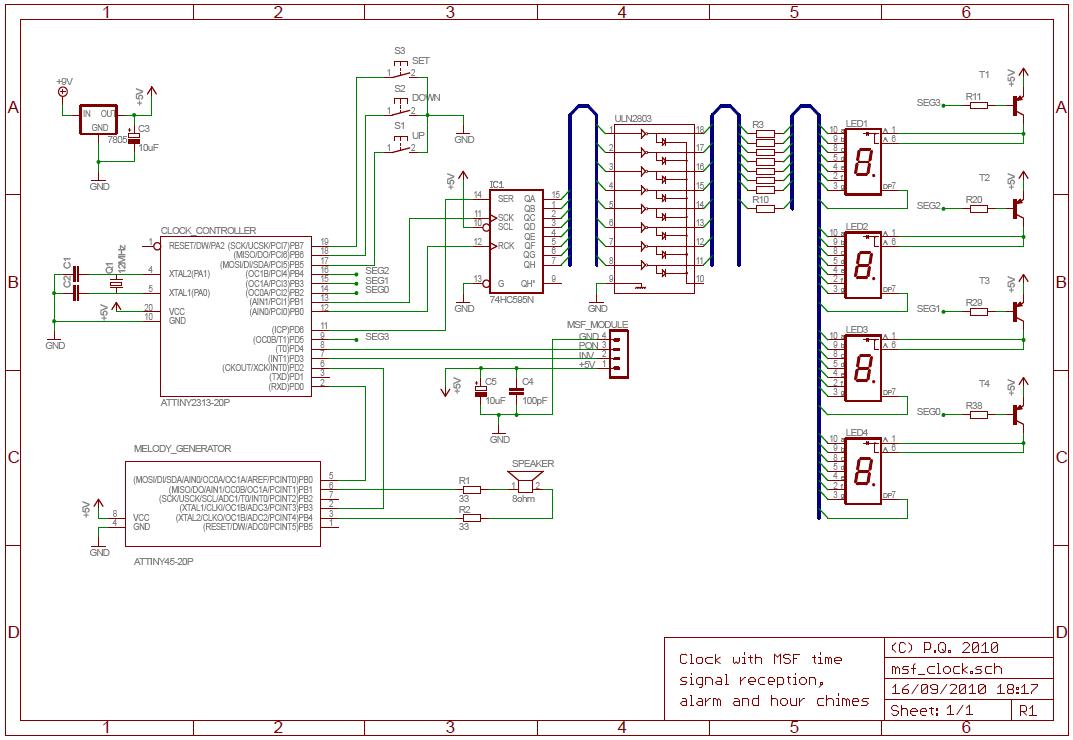
crystal Op Amp Radio
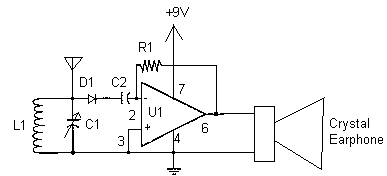
Here is a simple radio that is easy to build and inexpensive. In fact, you probably have all the parts you need in your junk box. You'll be surprised at the great reception with this little set. More: The antenna can be a piece of wire or a telescoping antenna. 18 inches is a good length for in the city. The tuning capacitor is a regular broadcast band tuning capacitor. I got mine from a junked AM radio. I got the loopstick antenna from that same source.
The described radio circuit is a basic AM receiver, which can be constructed using readily available components. The core of the design typically includes an RF amplifier stage, a mixer, and a demodulator, often implemented using discrete components such as transistors, resistors, capacitors, and inductors.
The antenna serves as the input for radio frequency signals. A simple wire or a telescoping antenna measuring approximately 18 inches is suitable for urban environments where signal strength may vary. This length allows for effective reception of AM broadcast signals.
The tuning capacitor is a critical component that enables the selection of specific frequencies. A standard broadcast band tuning capacitor, often salvaged from older AM radios, is ideal for this application. The capacitor works in conjunction with an inductor, forming a resonant circuit that can be adjusted to tune into different radio stations.
The loopstick antenna, also salvaged from an old radio, enhances the radio’s ability to pick up signals, especially in areas with weaker reception. This type of antenna is particularly effective for medium-wave frequencies, which is the standard for AM broadcasts.
In summary, this simple radio circuit is a practical project that utilizes common electronic components to create an effective AM receiver. The combination of a wire or telescoping antenna, a tuning capacitor from a junked radio, and a loopstick antenna provides a robust solution for receiving AM signals with satisfactory clarity and quality.Here is a simple radio that is easy to build and inexpensive. In fact, you probobly have all the parts you need in your junk box. You`ll be suprised at the great reception with this little set. # The antenna can be a piece of wire or a telescoping antenna. 18 inches is a good length for in the city. # The tuning capacitor is a regular broadcast band tuning capacitor. I got mine from a junked AM radio. I got the loopstick antenna from that sam 🔗 External reference
The described radio circuit is a basic AM receiver, which can be constructed using readily available components. The core of the design typically includes an RF amplifier stage, a mixer, and a demodulator, often implemented using discrete components such as transistors, resistors, capacitors, and inductors.
The antenna serves as the input for radio frequency signals. A simple wire or a telescoping antenna measuring approximately 18 inches is suitable for urban environments where signal strength may vary. This length allows for effective reception of AM broadcast signals.
The tuning capacitor is a critical component that enables the selection of specific frequencies. A standard broadcast band tuning capacitor, often salvaged from older AM radios, is ideal for this application. The capacitor works in conjunction with an inductor, forming a resonant circuit that can be adjusted to tune into different radio stations.
The loopstick antenna, also salvaged from an old radio, enhances the radio’s ability to pick up signals, especially in areas with weaker reception. This type of antenna is particularly effective for medium-wave frequencies, which is the standard for AM broadcasts.
In summary, this simple radio circuit is a practical project that utilizes common electronic components to create an effective AM receiver. The combination of a wire or telescoping antenna, a tuning capacitor from a junked radio, and a loopstick antenna provides a robust solution for receiving AM signals with satisfactory clarity and quality.Here is a simple radio that is easy to build and inexpensive. In fact, you probobly have all the parts you need in your junk box. You`ll be suprised at the great reception with this little set. # The antenna can be a piece of wire or a telescoping antenna. 18 inches is a good length for in the city. # The tuning capacitor is a regular broadcast band tuning capacitor. I got mine from a junked AM radio. I got the loopstick antenna from that sam 🔗 External reference

